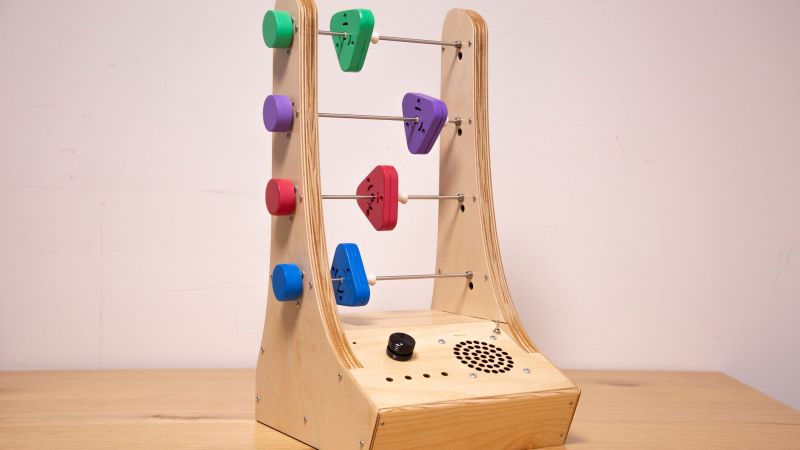The abacus has been around since antiquity, and takes similar forms over the hundreds of cultures that have embraced it. It may be one of the first devices to be considered as having a “user interface” in the modern context — at least for simple arithmetic calculations. But using an abacus as the UI for a music synthesizer seems like something entirely new.
Part art concept project and part musical instrument, the “Abacusynth” by [Elias Jarzombek] is a way to bring a more visual and tactile experience to controlling a synth, as opposed to the usual knobs and switches. The control portion of the synth consists of four horizontal rods spanning two plywood uprights. Each rod corresponds to a voice of the polyphonic synth, and holds a lozenge-shaped spinner mounted on a low-friction bearing. Each spinner can be moved left and right on its rod, which controls the presence of that voice; spinning the slotted knob controls the modulation of the channel via photosensors in the uprights. Each rod has a knob on one side that activates an encoder to control each voice’s waveform and its harmonics.
In use, the synthesizer is a nice blend of electronic music and kinetic sculpture. The knobs seem to spin forever, so Abacusynth combines a little of the fidget spinner experience with the exploration of new sounds from the built-in speaker. The synth also has a MIDI interface, so it works and plays well with other instruments. The video below shows the hardware version of Abacusynth in action; there’s also a web-based emulation to try before you build.
Thanks to [Jonas] for the tip.
















The spinner-slider things may be very useful in other builds. Since they’re purely mechanical, they could easily be overbuilt for public-facing applications where they might encounter a great deal of abuse. (Think children’s museums or installation art.)
Lozenge-shaped? They look like being triangles.
Triangle shaped lozenges.
This is really neat and if opensourced it’ll have the potential to be really widespread and modded (I’ve got some ideas about the structure to enhance modularity, ie. putting clips to hold metal bars instead of putting them in the middle of the wood).
It’ll be great to have more details about the build, even if the author started to share [url=https://eliasjarzombek.com/static/50d284c05bbd6b7b83a62fbbde070423/8aa08/2V3A9522.jpg]some of them[/url].
Also I’d like to see a coverage by Hackaday of the Daisy Seed, which is the MCU used in this project, I just discovered it (and bought one) and it seems really nice for audio applications : https://www.electro-smith.com/daisy/daisy